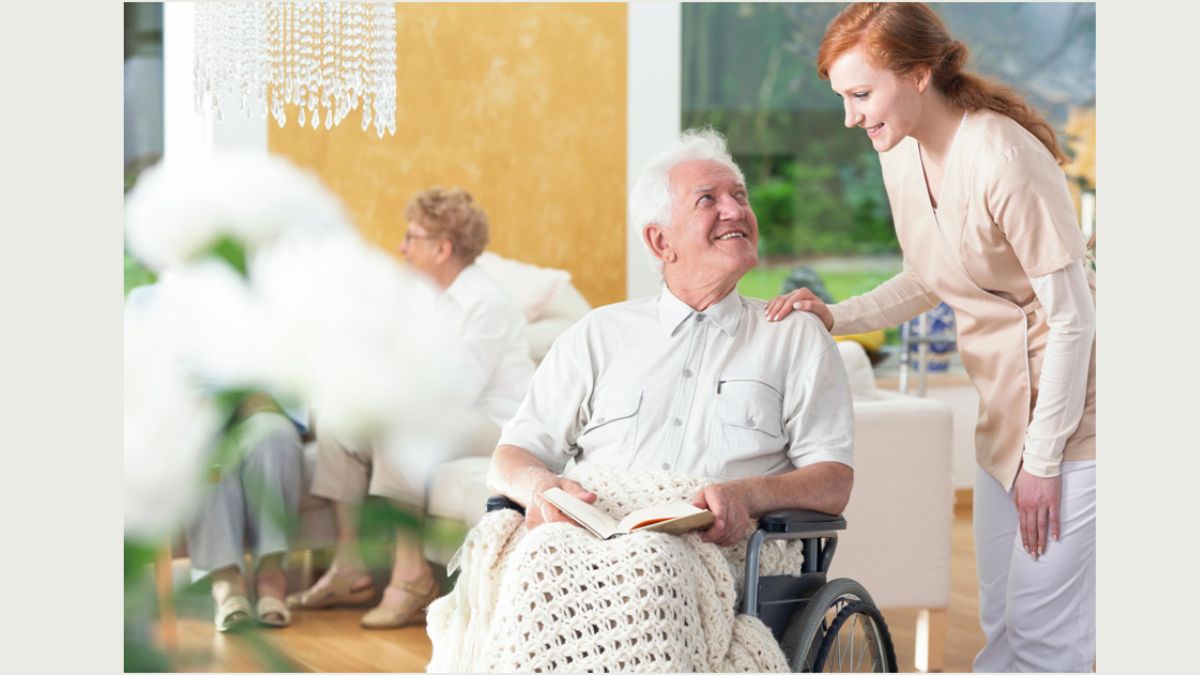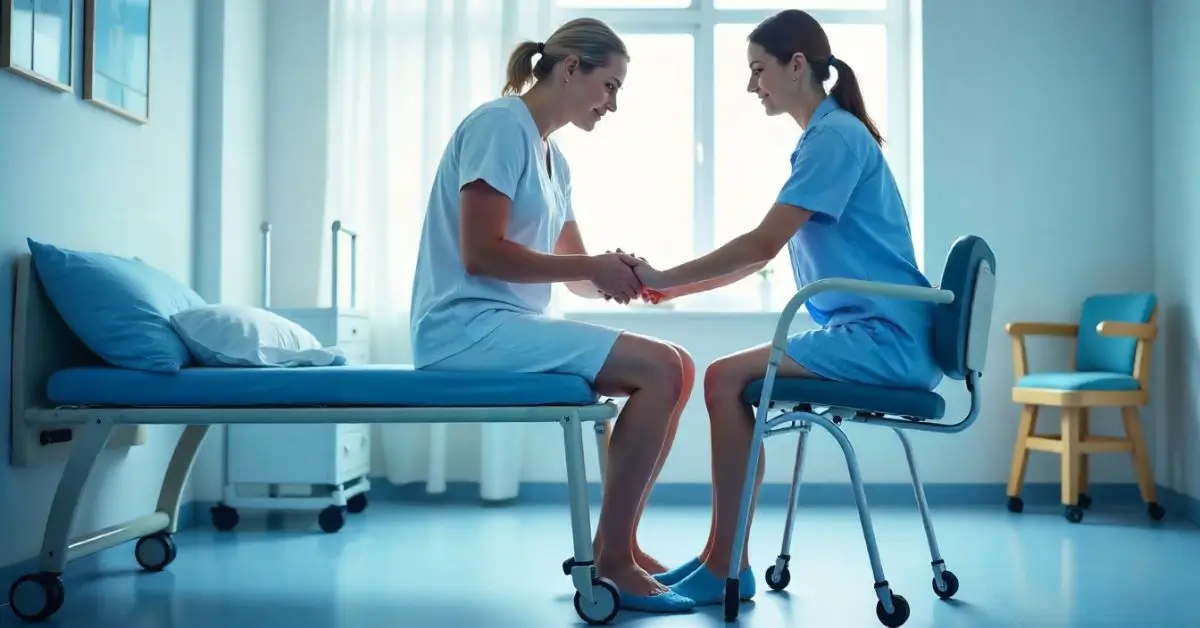HEALTH
Innovative Approaches to Personalized Dementia Care

Dementia care doesn’t have to follow a one-size-fits-all model. Today’s approaches are smarter, kinder, and way more creative.
From music therapy to virtual reality, personalized care is changing lives in the most heartwarming ways. These methods focus on the unique needs of each person, not just their symptoms.
Whether it’s tailored routines or interactive tech, innovation is making care more human. Let’s explore the fresh ideas that are redefining how we support those living with dementia. It’s care-with a personal twist!
Integrating Technology for Enhanced Communication
Technology is helping people with dementia stay connected in meaningful ways. Tablets and voice assistants allow for easy:
- video calls
- reminders
- entertainment
Apps designed for memory care help stimulate the brain and support daily tasks. Even wearable devices can track health and location to improve safety. These tools are simple to use and bring comfort to seniors and caregivers.
The goal is not to replace human connection but to make it stronger. With technology, communication becomes smoother, and loved ones feel closer, even when they’re far away.
Creating Meaningful Life Narratives
Everyone has a story worth telling, and that doesn’t change with dementia. Creating life narratives helps individuals remember and celebrate their past.
This can be done through photos, music, and storytelling. These narratives bring comfort and spark conversations. They also let families have a way to connect deeply with their loved ones.
Remembering achievements, hobbies, and milestones adds meaning to each day. It reminds everyone that the person is more than their diagnosis.
Holistic Approaches to Emotional Well-Being
Holistic approaches include activities that soothe the mind and spirit. Art, music, gardening, and gentle movement like yoga or tai chi can lift mood and reduce anxiety.
Even simple routines like hand massages or aromatherapy can make a big difference. These practices are calming and help people feel more connected to themselves and others.
Plus, they offer a way to express emotions when words become hard to find. Holistic care sees the whole person, not just the condition.
Environment as a Therapeutic Factor
Simple design choices, like soft lighting, clear signs, and calming colors, can help people with dementia feel more secure. Outdoor spaces with gardens or walking paths invite fresh air and peace.
A familiar, clutter-free setting encourages independence and reduces confusion. Even sounds and smells in the environment matter. Creating a space that feels safe and welcoming makes daily life easier and more enjoyable.
A Collaborative Care Model
Dementia care works best when everyone is part of the team. Family, caregivers, doctors, and therapists all bring valuable insights.
A collaborative care model ensures that each person’s needs are fully understood and supported. It also means regular communication and shared decision-making.
When care teams work together, the experience becomes more personal and less stressful. This is the heart of any successful Alzheimer’s care program for seniors.
Teamwork simply brings out the best in dementia care, one caring step at a time.
Fresh Solutions for Personalized Dementia Care
Personalized dementia care is evolving, and the future looks brighter with every new idea. By embracing fresh solutions, we can bring comfort, connection, and dignity to those who need it most.
Stay informed, stay involved, and explore new ways to make care more personal. Start today-because better care begins with better understanding.
HEALTH
Comprehensive Senior Care Plans for Health and Independence

Growing older is not about slowing down-it’s about living with comfort, dignity, and choice. Each stage of life brings new needs, but also new ways to stay active and fulfilled. A thoughtful care plan helps seniors do more than manage their health; it helps them keep their independence and sense of purpose.
When care is designed to address both body and mind, seniors thrive. They stay engaged, make their own choices, and enjoy daily routines that fit who they are. A good plan is never one-size-fits-all’s personal, flexible, and centered on living well.
Read on to see how comprehensive senior care creates balance, safety, and joy in everyday life.
Building a Plan Around the Person
The best care plans begin with listening. Every senior has a different rhythm, and understanding their preferences shapes how care is provided.
Some may need daily medical support, while others only want help with small tasks. When caregivers take time to know each person’s habits, health history, and goals, the plan becomes more meaningful and effective.
This kind of care respects independence. It lets seniors take part in decisions that affect them, which strengthens confidence and emotional well-being. A strong plan combines compassion with structure-it supports daily living without taking away choice.
Families find peace of mind knowing their loved ones are in safe, encouraging environments. Homes that specialize in personalized care, like Cedarburg assisted living homes, understand that true independence grows when support is steady but gentle.
The Health Connection
Good care begins with good health. Every care plan should help seniors stay strong in both body and mind.
Regular check-ups, healthy meals, and light exercise keep energy high. Simple activities like reading, talking, or listening to music can also keep the mind active and the heart happy.
Preventive care matters a lot. Finding small health problems early helps avoid stress and discomfort. With skilled caregivers, taking medicine or following therapy becomes easy and safe. When medical care and daily living support work together, life feels smoother, calmer, and more enjoyable every day.
Living with Purpose and Joy
Independence is more than doing things alone. It’s about making choices and feeling part of something.
Seniors who join hobbies, group events, or community activities often stay healthier and happier. Care plans that support movement, creativity, and friendship remind them that life is still full of joy and discovery.
Simple routines like morning walks or gardening create a meaningful rhythm. Each new day becomes a chance to learn, to smile, and to keep growing- not just getting older.
A Future Designed with Care
Comprehensive care is about creating a future that feels safe, active, and full of meaning. It combines health, comfort, and personal choice into one simple goal: living with dignity.
A well-made plan doesn’t just care for the body-it nurtures the heart and spirit too. With the right guidance and environment, seniors can enjoy independence that lasts, surrounded by care that understands what truly matters.
HEALTH
Nabota 200 Units – Korean Botulinum with a Natural Finish

Some aesthetic injectables work — but everyone notices. That’s not the goal for most patients. What they want is subtle help, not a frozen stare. That’s why nabota 200 units, a Korean-made botulinum product, is quietly becoming a favorite among medical professionals. It softens lines where they don’t belong but lets emotion stay on the face.
This isn’t a trend product or a flashy name. Nabota has a very specific purpose: calm down the muscle movement that pulls skin into folds. Crow’s feet, frown lines, and forehead creases are often the result of repeated expression over time. Injecting Nabota into targeted areas helps ease that tension. The muscles still work — just a bit less intensely — and the skin begins to smooth over.
What makes this formula stand out is that it doesn’t wipe away character. The face doesn’t go stiff. It moves. You smile, blink, react — naturally. That’s a major reason why many doctors trust Nabota over older or harsher alternatives.
That’s part of why koreaderma.shop has become a go-to source for clinics looking for the best place to buy korean botox online. The packaging is dependable, the product is trusted, and the outcomes with nabota 200 units speak for themselves.
Inside each Nabota package is a single vial holding nabota 200 units of botulinum toxin, in powder form. It’s not ready to use right away — it needs to be carefully diluted and only then injected. The actual dosage depends on the patient. Some people need a little more, others a little less. That decision is made by the practitioner based on what they see — muscle movement, skin condition, and the client’s preferences.
Usually, the first changes start to appear within a few days. It’s a gradual shift, not a dramatic one. By the second week, many patients feel their skin has relaxed — fewer visible creases, less tension. It’s not about looking different; it’s more about looking rested. And the results tend to last. Most enjoy the effect for five to six months, sometimes longer if their routine stays consistent.
Outside of wrinkle treatment, Nabota also has medical uses. It’s sometimes applied to manage muscle twitching around the eyes or reduce excessive sweating, especially in the hands and underarms. These procedures follow strict clinical guidelines, and they’re definitely not something to try without proper assessment. There are clear cases when the treatment isn’t suitable — like during pregnancy, active illness, or if someone has certain health conditions such as blood clotting issues or immune problems.
Before an appointment, it’s usually a good idea to avoid things that can affect circulation or healing. That might mean skipping alcohol, some medications, or even hot baths. Smoking can also interfere with recovery. These aren’t rules just for show — they genuinely help reduce swelling and improve how the product works.
What people like most about Nabota is that it doesn’t scream “cosmetic procedure.” It blends in. Friends won’t know what changed — they’ll just see you look fresher. And that quiet effectiveness is often what patients want: not a new face, just a lighter version of their own.
For professionals, consistency is everything. With Nabota, results tend to follow a reliable pattern. That matters a lot, especially when you’re treating delicate areas like around the mouth or eyes. You want to know how the product behaves. And when it behaves well — as Nabota does — you keep coming back to it.
HEALTH
What Are the Top 5 Mistakes After Knee Replacement?

Recovering from knee replacement surgery can be life-changing, but many patients unknowingly make errors that delay healing. The top 5 mistakes after knee replacement are commonly overlooked, yet they significantly affect recovery speed, comfort, and long-term success. Understanding these mistakes and learning how to avoid them can help you regain mobility, reduce pain, and get back to daily activities faster.
Quick Answer
The top 5 mistakes after knee replacement are: skipping physical therapy, avoiding movement, not managing pain properly, neglecting wound care, and pushing too hard too soon. Avoiding these errors ensures faster recovery, improved flexibility, and longer-lasting knee health.
Why Avoiding Mistakes Matters in Knee Replacement Recovery
Knee replacement is one of the most successful orthopedic procedures, with over 90% of patients experiencing major improvements in pain and mobility. However, experts emphasize that postoperative mistakes can compromise results. According to the American Academy of Orthopaedic Surgeons, disciplined rehabilitation and proper lifestyle choices directly impact long-term joint performance.
By avoiding the top 5 mistakes after knee replacement, patients reduce complications like stiffness, infections, or delayed mobility. Small missteps—like neglecting exercises or overexerting—can undo months of surgical effort.
The Top 5 Mistakes After Knee Replacement
1. Skipping or Inconsistently Following Physical Therapy
Physical therapy is the backbone of recovery. Patients often assume rest is enough, but consistent exercise restores strength and flexibility. Orthopedic specialists note that missing therapy sessions can cause scar tissue buildup and stiffness.
Correct approach:
- Attend all scheduled physiotherapy sessions.
- Perform daily home exercises as instructed.
- Track progress with a mobility diary.
2. Avoiding Movement Due to Fear of Pain
A common mistake is staying too still after surgery. While rest is important, complete inactivity can lead to blood clots, muscle weakness, and limited motion. The top 5 mistakes after knee replacement almost always include this error.
Correct approach:
- Walk short distances within days of surgery.
- Use assistive devices (walker, cane) when necessary.
- Gradually increase walking time each week.
3. Poor Pain Management and Medication Misuse
Some patients underuse or overuse pain medication. Ignoring pain leads to limited mobility, while overusing opioids risks dependency. Proper pain control encourages participation in therapy.
Correct approach:
- Follow doctor-prescribed medication schedules.
- Use ice therapy and elevation to reduce swelling.
- Explore non-opioid alternatives when possible.
4. Neglecting Wound Care and Infection Prevention
Post-surgical wounds require careful monitoring. Neglecting hygiene or ignoring redness/swelling risks infection, which may require revision surgery.
Correct approach:
- Keep the incision clean and dry.
- Watch for signs of infection: redness, fever, or drainage.
- Attend all follow-up appointments.
5. Pushing Too Hard, Too Soon
Overexertion is just as harmful as inactivity. Some patients return to sports, heavy lifting, or running prematurely. Surgeons stress that pushing too fast strains the new joint.
Correct approach:
- Follow a gradual return-to-activity plan.
- Consult your surgeon before resuming high-impact exercises.
- Focus on low-impact activities like swimming or cycling first.
Comparison Table: Common Mistakes vs. Correct Practices
| Feature | Common Mistake | Correct Practice | Impact on Recovery | Long-Term Outcome |
|---|---|---|---|---|
| Physical Therapy | Skipping sessions | Attending consistently | Faster flexibility | Stronger knee |
| Movement | Avoiding activity | Gradual walking & stretching | Better circulation | Improved mobility |
| Pain Management | Misusing medication | Following doctor’s guidance | Controlled pain | Reduced risk |
| Wound Care | Neglecting hygiene | Cleaning and monitoring incision | Lower infection risk | Safer recovery |
| Activity Level | Returning too soon to heavy tasks | Gradual reintroduction to activity | Steady progress | Longer joint life |
Additional Recovery Tips Beyond the Top 5 Mistakes
- Nutrition: A protein-rich diet supports muscle healing.
- Hydration: Staying hydrated prevents stiffness and aids circulation.
- Sleep: Quality rest accelerates tissue repair.
- Assistive Devices: Using walkers or crutches properly prevents falls.
Orthopedic surgeon Dr. Robert Marx once said, “The key to successful recovery lies not just in the surgery itself but in what patients do after surgery.”
EXPERT ANSWERS
What is the most common mistake after knee replacement?
The most common mistake is skipping or not following through with physical therapy, which limits mobility and long-term flexibility.
How soon should I walk after knee replacement?
Most surgeons recommend walking the day after surgery, beginning with short distances and gradually increasing over weeks.
Can I damage my knee replacement by overexercising?
Yes. Overexertion can strain the joint, loosen the implant, or cause swelling. Low-impact exercises are safest during recovery.
How long does full recovery take after knee replacement?
Recovery varies, but most patients achieve near-full function within 3–6 months, depending on discipline with therapy and lifestyle choices.
What foods should I avoid after knee replacement?
Limit high-sodium, processed, and sugary foods that cause inflammation and weight gain, as they delay healing.
Expert Advice on Safe Recovery
Medical guidelines emphasize balance: stay active without overstraining. According to clinical best practices, recovery is a partnership between patient effort and medical support. By avoiding the top 5 mistakes after knee replacement, patients maximize the benefits of their surgery.
Conclusion:
The top 5 mistakes after knee replacement—skipping therapy, avoiding movement, mismanaging pain, neglecting wound care, and pushing too hard—are all preventable. With careful attention, patients can recover more smoothly, protect their implant, and enjoy long-term freedom from pain. Success depends on consistent physical therapy, proper lifestyle habits, and open communication with healthcare providers.
FAQ’s
What happens if I skip physical therapy after knee replacement?
Skipping therapy delays recovery, increases stiffness, and risks permanent mobility issues.
Is swelling normal after knee replacement surgery?
Yes, moderate swelling is common for weeks, but severe or sudden swelling should be reported to a doctor.
Can I climb stairs after knee replacement?
Yes, with guidance from your physiotherapist. Start slowly and use handrails for support.
How can I sleep comfortably after knee replacement?
Sleep on your back with a pillow under your leg for support. Side sleeping is possible with proper cushioning.
When can I return to driving after knee replacement?
Most patients resume driving within 4–6 weeks, provided they can bend the knee comfortably and stop quickly.
What sports are safe after knee replacement?
Low-impact sports like swimming, golf, and cycling are safe. Avoid high-impact sports such as basketball or running.

 Cartoon3 months ago
Cartoon3 months agoUnlocking the Potential of Nekopoi.care: A Comprehensive Guide

 Game2 years ago
Game2 years agoExploring Aopickleballthietke.com: Your Ultimate Pickleball Destination

 BUSINESS1 year ago
BUSINESS1 year agoUnraveling the Mystery of 405 Howard Street San Francisco charge on Credit Card

 BUSINESS3 months ago
BUSINESS3 months agoWhat Companies Are In The Consumer Services Field

 HOME IMPROVEMENT2 years ago
HOME IMPROVEMENT2 years agoVtrahe vs. Other Platforms: Which One Reigns Supreme?

 ENTERTAINMENT1 year ago
ENTERTAINMENT1 year agoUnderstanding Bunkr Album: A Comprehensive Guide

 TECHNOLOGY2 years ago
TECHNOLOGY2 years agoThe Guide to Using Anon Vault for Secure Data Storage

 ENTERTAINMENT2 years ago
ENTERTAINMENT2 years agoThe Ultimate Guide to MP3Juices: Free Music Download
















